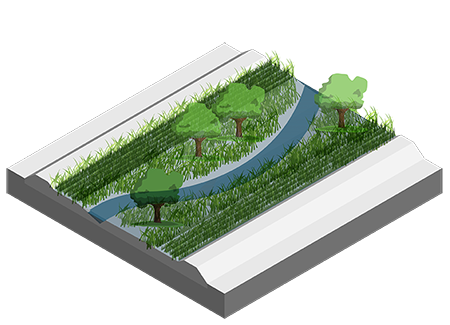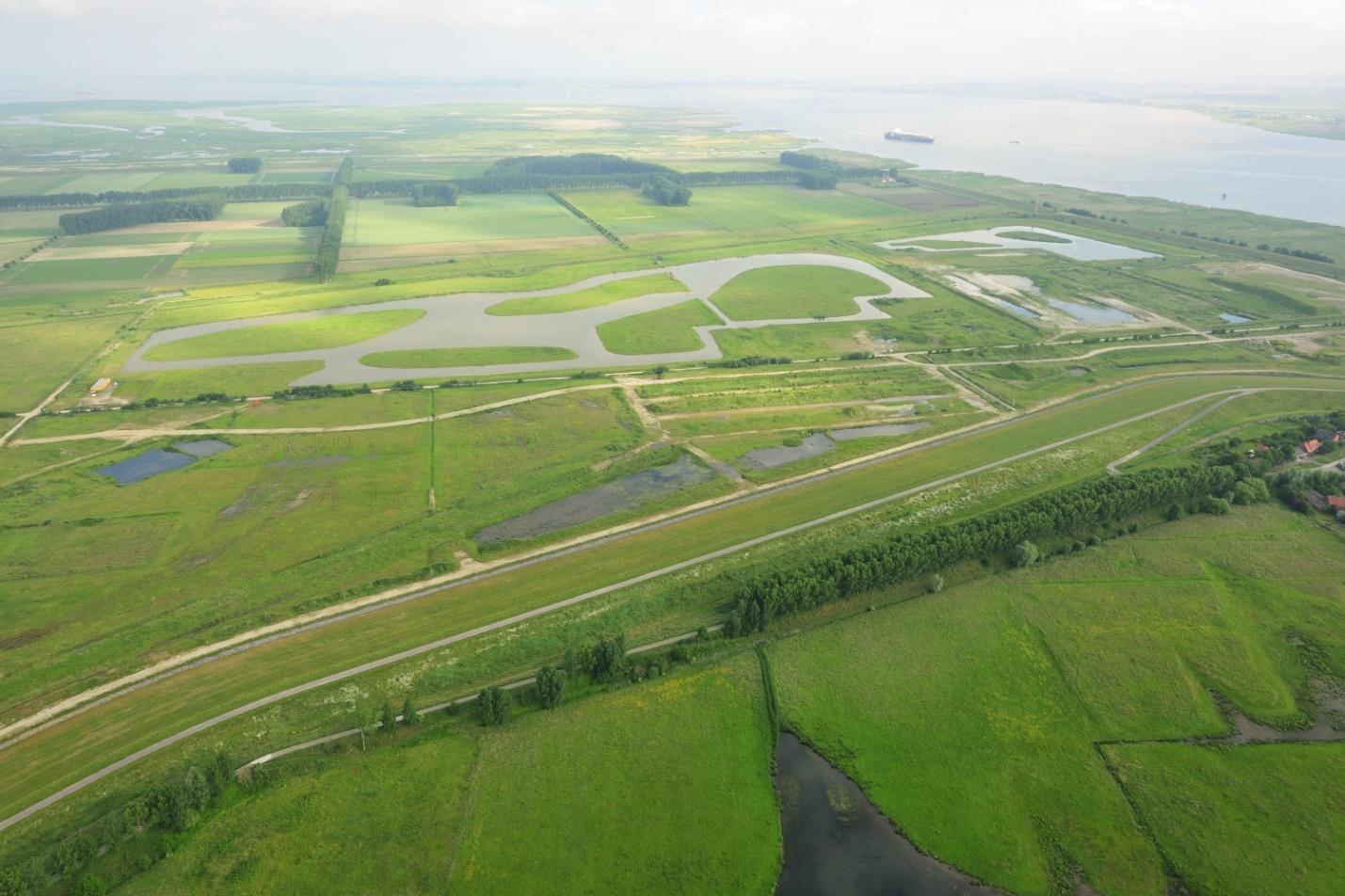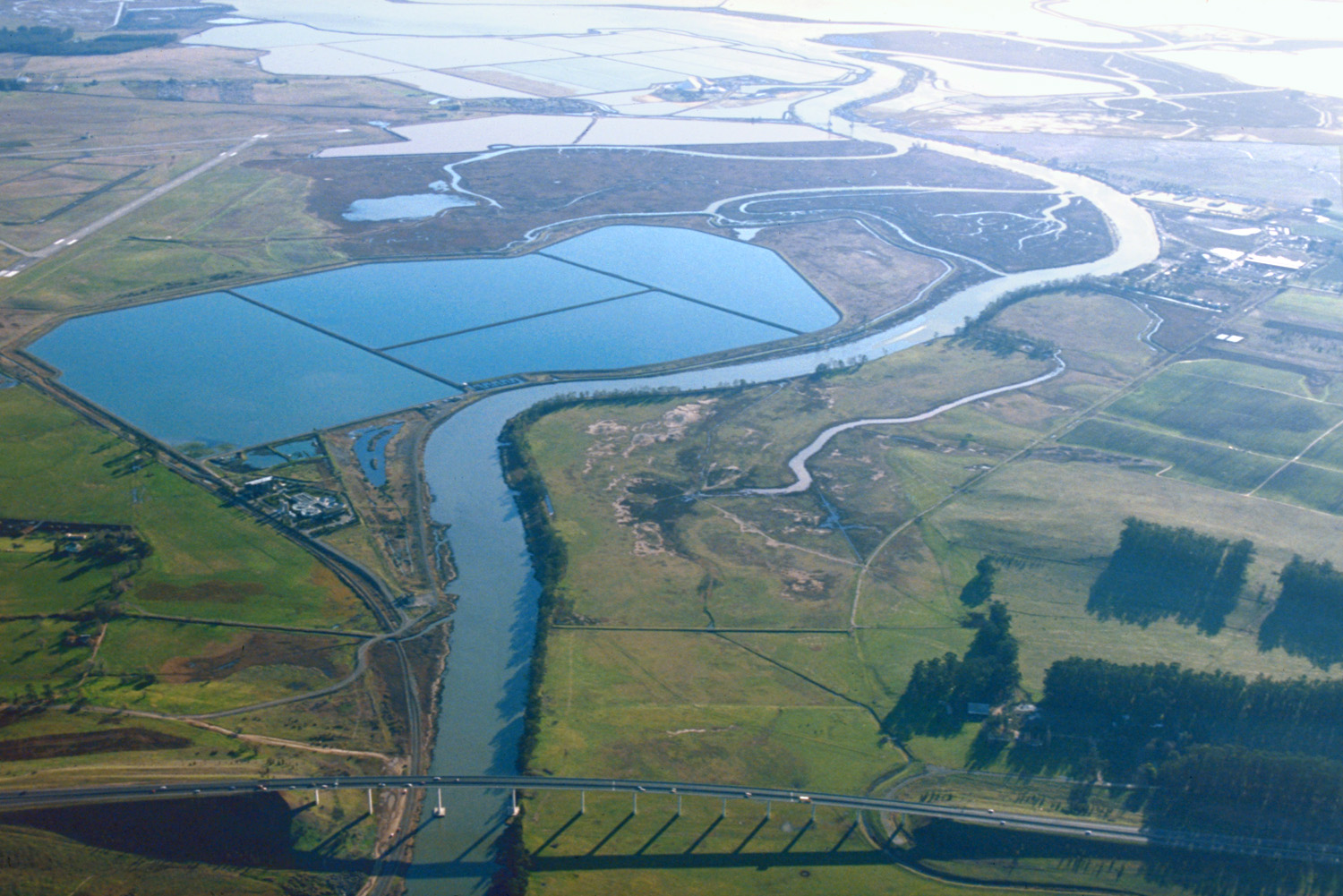Setback Levees
Setback levees are earthen embankments that are located at a distance from a river channel in such a way to allow the river to meander in a more natural manner and occupy some or all of its natural floodplain during high water events. Setback levees also maintain a more natural river and stream dynamics, promoting a more ecologically healthy and dynamic river system.
Levees can either be initially developed with a larger setback from the main channel of a river to allow for a more natural floodplain function to occur or existing levees which are too close to the river system can be moved back to allow for the river to meander and the floodplain to be restored.
Hazard Mitigation
By maintaining some of the natural floodplain, setback levees allow for increased conveyance in the floodway by enabling floodwaters to spread out and slowdown. This reduces the height of floodwaters, the pressure on the levee itself and the threat of harm to life and property which are being protected by the levee.
Siting Considerations
Setback levees allow for the connecting, or reconnecting, of floodplains to their water source. As such, they require sufficient land to allow for those reconnections to occur. This may require changes in current land uses to ensure both the effectiveness of the strategy and that there is not infrastructure or human uses that are being put at greater risk with the establishment of the setback levee. In some cases such changes in land use are relatively minor and, in the case of agricultural practices, may continue unabated.
Determining the appropriate location for a setback levee is a challenge. Existing topography, historic floodplain maps, existing land use, geomorphology and potential encroachments into the floodplain should all be taken into consideration when exploring potential levee alignments.
Costs
Cost estimates range significantly based on the length, size, and material used to construct a setback levee as well as the distance the levee is being setback from the main stem of the river. Additionally, setback levees may require the acquisition of private property to allow for construction and re-creation of a natural floodplain. Two projects out of Pierce County in Washington found construction costs on setback levees – including property acquisition – ranged from approximately $2.5 to $5 million per mile of levee, whereas a project in West Sacramento cost nearly $20 million per mile of levee being setback.

Co-Benefits of the Strategy
By allowing for a more natural riverine function, creating recreational opportunities and establishing restoration potential for important commercial and game species, setback levees provide opportunities for economic stimulus. A study of a setback levee along a stretch of Johnson Creek in Portland, Oregon found a $30 million benefit from the project without including the commercial value associated with the increases in the salmon population.
In some areas, the construction of setback levees has also included the creation of hiking or biking trails at or along the top edge of the levee. Incorporating such elements into the design of setback levees not only creates a recreational opportunity for neighboring communities, it also provides access to the restored floodplain and riparian habitats that are made possible through investment in such levees.
Restoration of a more natural flood regime can have a myriad of benefits, including improvements in water quality and the restoration of habitat. By slowing down floodwaters, the sediments and nutrients in the water column are able to settle out. This, in turn, can improve overall water quality as well as the productivity of the floodplain soils. In the Pacific Northwest setback levees have been effectively used to create the space necessary to help with restoration of salmon habitat.
Maintenance Considerations
Setback levees, like more traditional levees, require regular maintenance. However, the pressure and impact of any individual flooding event on a setback levee is generally less severe when compared to more traditional levees as the larger floodplain reduces the velocity and volume of water when it comes into contact with the levee. The United States Army Corps of Engineers has established guidance on the maintenance of levees that can be found here.
Similar or Complementary Solutions
Setback levees often require moving people out of harm’s way to ensure that there is sufficient space to manage floodwaters. They also provide opportunities to restore floodplains by providing room for a more natural meandering and floodwater pulse in the larger river system.
Additional Considerations
Levee construction and design is often a major construction project and will require a number of permits and authorizations. Of particular importance are a Clean Water Act 404 permit, managed by the United States Army Corps of Engineers, and Clean Water Act 401 certificate, often managed by state agencies. It is also likely that a project will need a FEMA Letter of Map Revision (LOMR), which signifies changes to flood maps based upon the effects of a project.
Depending on the location of a project there may also be a need for permits relating to the Endangered Species Act and Coastal Zone Management Act as well as any state or local land use or permit review requirements.
Additional Resources
The USACE has established the following guidance on the design and construction of earthen levees. While this is not explicitly directed at the construction of setback levees, much of this is applicable as the principle difference between setback levees and traditional levees is derived from proximity to the main stem of a waterway.


